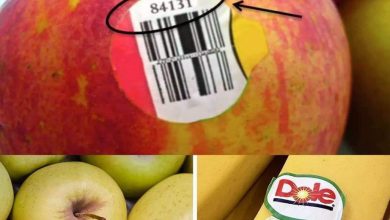What’s the difference between Coke Zero and Diet Coke?

Coca-Cola, a beverage giant with a legacy spanning over a century, offers a diverse array of soft drinks tailored to different tastes and dietary needs. Among its lineup, Coke Zero and Diet Coke stand out as low-calorie, zero-sugar alternatives to the classic Coca-Cola. Despite their shared purpose, these beverages possess distinct characteristics that set them apart. Let’s delve into the nuances of Coke Zero versus Diet Coke to understand their differences and appeal.
ADVERTISEMENT
1. Flavor Profile
ADVERTISEMENT
Coke Zero, engineered to replicate the iconic Coca-Cola flavor without the guilt of sugar and calories, employs advanced technology and sweeteners to achieve its goal. Its formulation aims to closely mimic the taste of traditional Coca-Cola, making it an attractive option for consumers who crave the familiar Coca-Cola experience without compromising on health goals.
ADVERTISEMENT
In contrast, Diet Coke, introduced in 1982, presents a flavor profile distinct from its counterparts. Marketed as a lighter alternative to Coca-Cola, Diet Coke features a unique blend of flavors that loyal consumers can readily identify. This divergence in taste arises from the deliberate selection of ingredients, catering to a specific segment of health-conscious consumers seeking a refreshing, calorie-conscious beverage.
2. Target Audience
While both beverages cater to individuals seeking low-calorie, zero-sugar refreshment, their target demographics exhibit subtle differences. Coke Zero appears to resonate more with consumers desiring the full-flavored essence of Coca-Cola minus the sugar and calories. Its marketing efforts may particularly appeal to a younger demographic and males who may not have been fully engaged by Diet Coke’s branding strategies.
On the other hand, Diet Coke has historically cultivated a strong association with female consumers, leveraging branding tactics that emphasize its light and refreshing attributes. However, it’s essential to note that both beverages boast broad consumer appeal, transcending gender and age boundaries.
3. Sweetener Composition
A fundamental contrast between Coke Zero and Diet Coke lies in their respective sweetener compositions. Coke Zero typically incorporates a blend of aspartame and acesulfame potassium (Ace-K) to deliver its signature sweetness without the caloric burden. This combination of sweeteners contributes to Coke Zero’s ability to closely replicate the taste of regular Coca-Cola.
In contrast, Diet Coke relies primarily on aspartame as its sweetening agent. The absence of Ace-K in Diet Coke’s formula may influence its lighter taste profile compared to both Coke Zero and traditional Coca-Cola, offering a distinctive flavor experience to consumers.
4. Ingredient List
Analyzing the ingredient lists of Coke Zero and Diet Coke reveals shared components such as carbonated water, caramel color, phosphoric acid, natural flavors, and caffeine. However, variations in ingredient proportions and the sequencing of components contribute to the nuanced differences in taste between the two beverages.
Coke Zero typically prioritizes its sweetener blend ahead of caramel color in its ingredient list, indicating a higher concentration relative to other components. This emphasis enhances Coke Zero’s rich flavor profile, distinguishing it from Diet Coke, where caramel color precedes the sweetener, suggesting a different formulation approach.
5. Branding and Packaging
The branding and packaging strategies employed by Coke Zero and Diet Coke further underscore their individual identities. Coke Zero, often rebranded as Coca-Cola Zero Sugar, emphasizes its commitment to delivering Coca-Cola’s authentic taste without the sugar content. Its packaging mirrors that of classic Coca-Cola, featuring a black background adorned with a red disc and familiar font, reinforcing its association with the iconic brand.
In contrast, Diet Coke boasts a distinct branding approach characterized by a silver can with prominent red lettering and a colorful vertical stripe. This distinctive packaging sets Diet Coke apart from its counterparts, signaling its unique identity as a refreshing diet-oriented beverage. Additionally, Diet Coke frequently introduces limited-edition flavors and packaging designs, perpetuating its image as an evolving and dynamic brand separate from traditional Coca-Cola.
In summary, while Coke Zero and Diet Coke share the common goal of providing consumers with low-calorie, zero-sugar alternatives to Coca-Cola, their differences in flavor profile, target audience, sweetener composition, ingredient list, and branding strategies offer consumers diverse options to suit their preferences. By understanding these distinctions, consumers can make informed choices that align with their taste preferences and dietary goals.




